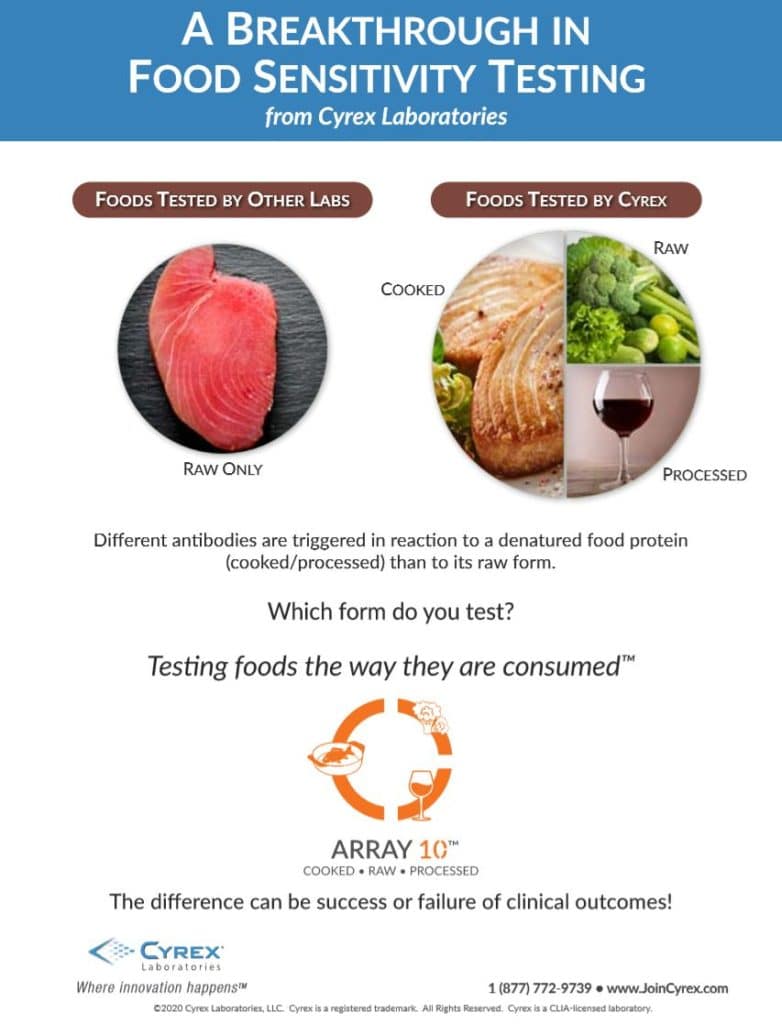By Debby Hamilton, MD, MPH
In 1996 with the development of genetically engineered herbicide-tolerant soy, corn, and cotton, the use of the organophosphate pesticide glyphosate (n-phosphonomethylglycine) became more common. Since then there has been a dramatic 300-fold increase in application from its first introduction until 2014. Approximately 67% of this growth has been in the last 10 years. Glyphosate disrupts the shikimate pathway, which exists in plants, yeast, and bacteria but not in animals and therefore thought to be safe in humans. What was not considered is the large bacterial ecosystem in humans called the microbiome, which is critical for a healthy immune system. Lactobacillus, Bifidobacterium and soil-based organisms are decreased by glyphosate, causing an increase in Clostridium species and Salmonella-promoting dysbiosis.
The shikimate pathway through our gastrointestinal bacteria is involved in producing our aromatic amino acids, including tryptophan and tyrosine. These amino acids are important for the formation of neurotransmitters. This pathway also produces precursors for many critical compounds such as serotonin, melatonin, thyroid hormone, folate, CoQ10, and vitamins C and E. Methionine is another amino acid that is negatively impacted by glyphosate. Since methionine is a critical source of sulfur in the body, this can cause a sulfur depletion that impacts many critical biochemical and detoxification reactions.
Due to its ability to chelate, glyphosate can bind and cause a deficiency in minerals, including iron, cobalt, molybdenum, and manganese. Manganese is needed for the Mn superoxide dismutase enzyme that protects the mitochondria from oxidative stress. This can lead to mitochondrial dysfunction that is common in many chronic diseases. This deficiency also impairs the enzymes glutamine synthase and arginase, resulting in elevated glutamine and ammonia that can be toxic to the body.
Glyphosate interferes with our critical cytochrome P450 enzymes. These enzymes have multiple functions in the body ranging from detoxification, oxidation, and converting compounds such as pharmaceutical medicines, environmental chemicals, and endogenous molecules. By harming detoxification enzymes, glyphosate enhances the toxicity of other dangerous chemicals. It can also lead to damage of the liver and kidneys by interfering with natural detoxification mechanisms. CYP enzymes are involved in both cholesterol and vitamin D3 synthesis and breakdown. CYP enzymes are also involved in synthesis of steroids from cholesterol within the mitochondrial membrane, leading to potential mitochondrial dysfunction.
The rates of celiac and gluten intolerance have risen over the last few decades. Increasing use of glyphosate correlates with this increase. Several of the mechanisms that are harmed by glyphosate are involved in gluten and wheat reactions. Glyphosate is sprayed on wheat products before harvest, which increases the amount of glyphosate residues on wheat. It also contributes to dysbiosis, increasing the risk of food reactions and autoimmune reactions. Interference with detoxification enzymes leads to increases in toxic exposures in the intestine, contributing to damage in the intestine.
Concerns with glyphosate toxicity have led to research on natural substances that can counteract some of these harmful effects. Humic acid is derived from organic matter in humus and peat in the soil. It has been used safely in agricultural settings to remove glyphosate from the soil. Research has shown some positive results in humans and animals. Humic acid adsorbs glyphosate, decreasing its negative impact on the microbiome. Fulvic acid is another component of humus along with humic acid. It is a smaller molecule able to be absorbed into the blood stream to help bind glyphosate in the tissues while humic acid is larger and has more impact for binding glyphosate in the intestine.
Glyphosate damages the liver and kidneys by causing DNA damage. Because of this, research has looked for natural compounds to protect these organs. Research has shown both dandelion (Taraxacum officinale) and quercetin to be protective for the liver and kidneys. Dandelion is hepatoprotective partly through activation of the Nrf2-Keap1 pathway, leading to an antioxidant effect. It also helps restore the CWP enzymes that are harmed by glyphosate, therefore helping support detoxification. In a similar mechanism as dandelion, quercetin protects the detoxification CWP enzymes and has antioxidant and anti-inflammatory properties.
Another mechanism of detoxification is the binding of chemicals in the gastrointestinal tract. Adequate bile flow is important for binding of fat-soluble molecules. Bile acids are bound to taurine or glycine to become bile salts to be secreted into the intestine. Glyphosate disrupts bile homeostasis interfering with this process. Taurine can promote bile flow to compensate for the harm from glyphosate. Taurine also is a source of sulfur in the body. Sulfur is a component of many amino acids and glutathione that are needed for detoxification.
Glyphosate exposure decreases the activity of several antioxidants, including superoxide dismutase, catalase, and glutathione-S- transferase, resulting in increased lipid peroxidation. Antioxidants such as vitamin C have been shown in research to decrease oxidative stress associated with glyphosate along with being protective from oxidative damage.
Glyphosate can also bind to toxic chemicals, such as aluminum, allowing them to bypass the normal intestinal barrier. By bypassing the intestinal barrier, glyphosate enhances the bioavailability of aluminum in the body and therefore its toxicity by increasing the amount entering the brain. Aluminum is a neurotoxin so increasing its exposure to the nervous system is dangerous. By having a different structure than other heavy metals, aluminum is also more difficult to remove from the body. The mineral silica has been shown to be an effective binder for aluminum in the intestine preventing its absorption into the body.

ToxinPul™ was designed as a multi-function detoxification supplement to support both glyphosate and heavy metal removal from the body. The ingredients were included based on research in supporting detoxification safely. It includes a combination of binders, supplements to facilitate tissue removal of toxins, and organ-specific protective ingredients. Cilantro helps bring toxins out of the tissues so they can be bound by the other binders including chlorella, humic acid, fulvic acid, and silica. The binders in ToxinPul™ are unique in being able to bind chemicals and metals both in the body and within the intestine. Quercetin, dandelion, and taurine help protect the liver and kidneys and support the detoxification system. Vitamin C is an antioxidant to decrease toxin-induced oxidative stress. Most detoxification supplements are targeted primarily for heavy metal removal. While heavy metal detoxification is important, we are learning more and more about the dangers of glyphosate and other pesticides. ToxinPul™ was designed to safely support removal of the multitude of chemicals, including the commonly used pesticide glyphosate.
References
Awad AS. Neutralization of the antimicrobial effect of glyphosate by humic acid in vitro. Chemosphere. 2014. 104: 258-161.
Bard R. Effects of Humic Acid on animals and humans: An Overview of Literature and a Review of Current Research. 2002. pg. 3-7.
Battaglin WA. Et al. Glyphosate and its degradation product 274 AMPA occur frequently and widely in U.S. soils, surface water, groundwater, and precipitation. J Am Water Resources Assoc. 2014. 50:275-290.
Benbrook CM. Trends in glyphosate herbicide use in the United States and globally. Environ Sci Eur. 2016;28(1):3.
Bhardwaj JK. Et al. Effective attenuation of glyphosate-induced oxidative stress and granulosa cell apoptosis by vitamins C and E in caprines. Mol Reprod Dev. 2019 Jan;86(1):42-52
Cai L. et al. Purification, Preliminary Characterization and Hepatoprotective Effects of Polysaccharides from Dandelion Root. Molecules. 2017. 22:1409
Christl I. Et al. Effect of Humic and fulvic acid concentrations and ionic strength on copper and lead binding. Environ Sci Technol. 2005 Jul 15;39(14):5319-26.
Gehin A. et al. glyphosate-induced antioxidant imbalance in HaCaT: The protective effect of Vitamins C and E. Environ Toxicol Pharmacol. 2006 Jul;22(1):27-34.
Gerlach H. Et al. Oral application 345 of charcoal and humic acids to dairy cows influences Clostridium botulinum blood serum 346 antibody level and glyphosate excretion in urine. J Clin Toxico. 2014. 4:186.
Glynn AW. “Fulvic and humic acids decrease the absorption of cadmium in the rat intestine.” Arch Toxicol. 1995;70(1):28-33.
Gondar D. Et al., R. López, S. Fiol, J.M. Antelo, F. Arce. “Cadmium, lead, and copper binding to humic acid and fulvic acid extracted from an ombrotrophic peat bog.” Geoderma.2005.12.003.
Hudák, A., et al. “Effect of the consumption of humic acid with bound complex micro elements in cases of occupational cadmium exposure.” Central European Journal of Occupational and Environmental Medicine, 1997. 3(3): p. 175-186.
Landrigan PJ, Benbrook C. GMOs, herbicides, and public health. N Engl J Med. 2015. 373:693- 397 695.
Mesnage R. Et al. Ethylated adjuvants of glyphosate-based herbicides are active principles of human cell toxicity. Toxicology. 2013. Nov 16;313(2-3):122-8.
Piccolo A. Et al. Adsorption of Glyphosate by Humic Substances. J. Agric. Food Chem. 1996. 44 (8): 244.
Samsel A. Seneff S. Glyphosate’s Suppression of Cytochrome P450 Enzymes and Amino Acid Biosynthesis by the Gut Microbiome: Pathways to Modern Diseases. Entropy. 2013. 15, 1416-1463.
Samsel A, Seneff S. Glyphosate, pathways to modern diseases II: Celiac sprue and gluten intolerance. Interdisciplinary Toxicology. 2013. 6(4):159-184.
Samsel A. Seneff S. Glyphosate, pathways to modern diseases III: Manganese, neurological diseases and associated pathologies. Surg Neurol Int. 2015; 6:45.
Senapati T. Et al. Observations on the effect of glyphosate-based herbicide on ultra-structure (SEM) and enzymatic activity in different regions of the alimentary canal and gill of Channa Punctatus. Journal of Crop and Weed. 2009. 5(1):236-245.
Shehata AA. Et al. 2014. Distribution of glyphosate in chicken 477 organs and its reduction by humic acid supplementation. Japan Poultry Sci. 2014. 51:334-338.
Soudani N, et al. Glyphosate disrupts redox status and up-regulates metallothionein I and II genes expression in the liver of adult rats. Alleviation by quercetin. Gen Physiol Biophys. 2019 Mar;38(2):123-134.
Swanson NL, Leu A, Abrahamson J, Wallet B. 2014. Genetically engineered crops, glyphosate 499 and the deterioration of health in the United States of America. J Org Syst. 2014. 9:6-37.
Van Bruggen AHC Et al. Environmental and health effects of the herbicide glyphosate. Sci Total Environ. 2017. Nov 5;616-617:255-268.







